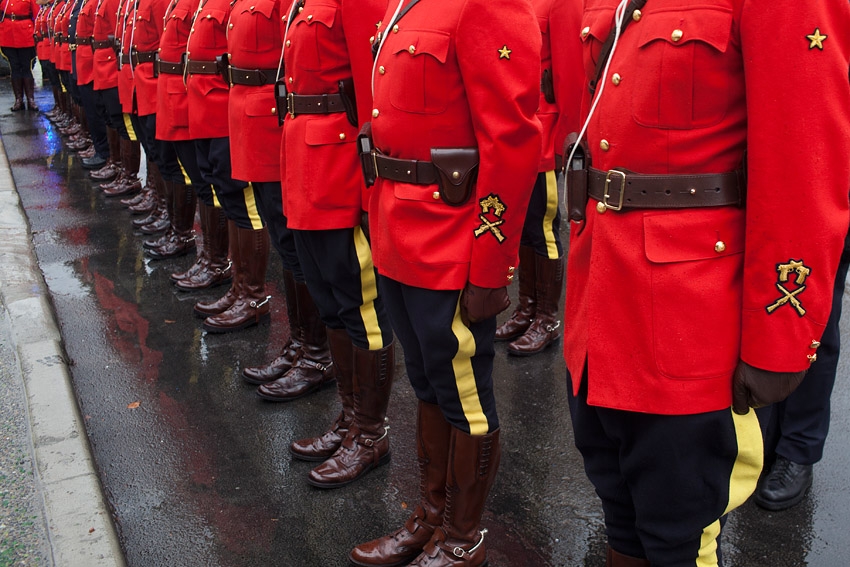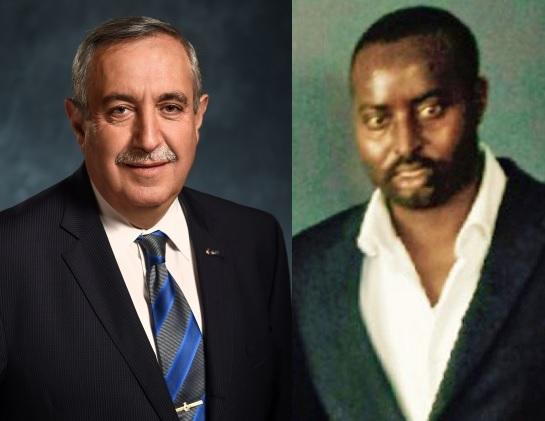
The Chaos that is the RCMP
I have read in various media reports that the RCMP officers in Moncton who responded to the call of an individual walking down a street brandishing a firearm were only equipped with pistols and shotguns. I was very shocked and dismayed to read these reports because in 2009 I was contracted by the RCMP to undertake a survey analyzing whether the RCMP should switch from the shotgun to the carbine. At the time I began the research 53 police agencies in Canada including the Ontario Provincial Police (OPP), the Metropolitan Toronto Police and the Calgary police service had already armed their officers with patrol carbines.
My report was submitted to the RCMP in March 2010 and was based on consultations with firearms specialists in the National Use of Force Program, Community, Contract and Aboriginal Policing at RCMP Headquarters in Ottawa. The report based on a survey questionnaire solicited responses internally from divisional members in the RCMP who were knowledgeable about firearms. A sample of urban suburban and rural police agencies were also sampled in the survey. In total my report was based on over 2500 survey responses.
The report sought answers to whether the RCMP should 1) Replace the shotgun with the carbine; 2) Keep the shotgun or 3) add the carbine to the RCMP’s existing armament. The Report was titled ‘Aiming For Safety: A Needs Analysis to determine the feasibility of adopting the patrol carbine in the RCMP. My recommendations based on the report’s responses concluded:
The RCMP should immediately adopt and phase in a national patrol carbine program for all of its uniformed patrol officers regardless of whether they are providing policing services in a rural/urban/suburban environment. The report also stated that the RCMP should:
Retain the shotgun but reconfigure this firearm so that it fires only non-deadly projectiles such as the beanbag and that Carbines should be reserved only for deadly force situations. The report also recommended that ‘prior to deploying carbines at the patrol officer level the RCMP should plan and execute a comprehensive and effective training program for all of its members. I stated that ‘new policies should be drafted and issued which include guidelines on the storage, maintenance, training and re-qualification requirements for the carbine as well as to where and when the weapon can be deployed.
I find it appalling that four years later the RCMP has failed to implement these recommendations. Back in March 2011 post media carried a news story titled ‘RCMP looking to replace service shotguns with rifles by Doug Quan. In that article Staff Sgt Scott Warren, chair of the RCMP’s officer safety committee stated “Yesterday is when this gun needed to be on the streets.’ Here we are in 2014 and RCMP officers in this country are still not armed with patrol carbines despite the fact that there are exigent circumstances where they may be required to respond to ‘Mayerthorpe type situations.’
The RCMP claim they have made some changes but from media reports it appears that the Moncton RCMP officers who responded to a call involving a man with a gun did not have access to assault rifles. My question is ‘Why’ did they not have assault rifles and ‘Why’ has the RCMP not acted upon the recommendations contained in my 2010 report.
My report was authored during the period when there was a revolt at RCMP headquarters by Senior ranking RCMP officers and when Bob Paulson was promoted to Assistant Commissioner responsible for the National Use of Force Program, Community , Contract and Aboriginal Policing at RCMP headquarters. The terms of my contract required that the final milestone after submitting my report was to meet and review the draft report and then make any changes or revisions that were required. Despite calling my RCMP contacts at RCMP headquarters repeatedly and sending them emails no one returned my calls. I found it extremely odd that the people who had been working with me on a daily if not weekly basis on this project were not returning my calls. I thought it extremely odd because I had been paid in full for the project and although the report had been submitted I indicated that I would make any changes they required at no cost to the RCMP.
After Three months of not receiving a single email or phone call from my contacts at the RCMP I received a letter from Bob Paulson indicating that he was not satisfied with the report because I relied on American studies and did not include any Canadian research. I wrote back to him indicating that there are no Canadian studies that have undertaken an examination of the patrol carbine and that if he had any issues these should have been dealt with in a face to face meeting to review the report which was the final milestone of the contract. It appears that because my report was not authorized on his watch that he wanted nothing to do with it. I persevered and eventually had a meeting with the Senior Deputy Commissioner of the RCMP Darrill Madill at which Paulson was present. I challenged Paulson to name a single study in Canada that had examined the patrol carbine and he couldn’t. He also admitted to telling his staff not to contact me either by telephone or email which I found bizarre to say the least. I informed Darrill Madill that Paulson’s conduct in this regard was outrageous and told Paulson exactly what I thought of his letter and the repressive actions he had taken against his staff.
Approximately three months later there was a change in the RCMP Command structure and Rod Knect now the Senior Deputy Commissioner of the RCMP had his executive assistant contact me. The Assistant informed me that he and the Senior Deputy Commissioner had just returned from the inquest into the deaths of the four RCMP officers at Mayerthorpe. He said the SDC asked him to find out if there were any reports at RCMP Headquarters that dealt with the issue of the patrol carbine and they discovered my report attached to Paulson’s letter. After reading my report both he and the SDC thought my report was excellent. They informed me that they would be moving quickly to implement my recommendations to equip officers with the patrol carbine. Unfortunately a few months later the SDC announced that he was leaving the RCMP and taking a position as Chief of the Edmonton Police Service.
So here we are in 2014 and the RCMP still have not trained or equipped their uniform patrol officers with the patrol carbine. I can understand that making such a transition can take time but my report was provided to the RCMP four years ago. The question remains in this day and age why is Canada’s National Police Force still behind the times when it comes to equipping their officers with patrol carbines? Police agencies across Canada took these steps years ago. My report addressed a major flaw in the RCMP’s firearms technology and capability and today we are still not much further ahead in this area. In my opinion Bob Paulson has a lot of questions to answer. For a Commissioner who claims he will deal with bullying and harassment within the RCMP he has no credibility because I saw firsthand how he muzzled the RCMP officers who were working with me on a project that in the end would have helped ensure the safety of Canadians and possibly prevent shooting tragedies like the one in Mayerthorpe and most likely in Moncton. The deaths in Moncton are a tragedy but so is the fact our National Police Force is still one of the few remaining police services in this country that have outdated and ineffective firepower to deal with active shooter situations.
Darryl T Davies
Instructor in criminology and criminal justice
Department of Sociology and Anthropology
Carleton University
* The views expressed are those of the author in his personal capacity and do not necessarily represent the position of Carleton University. This article originally appeared on the Site ‘Re-sergeance.net and is reprinted with permission.













